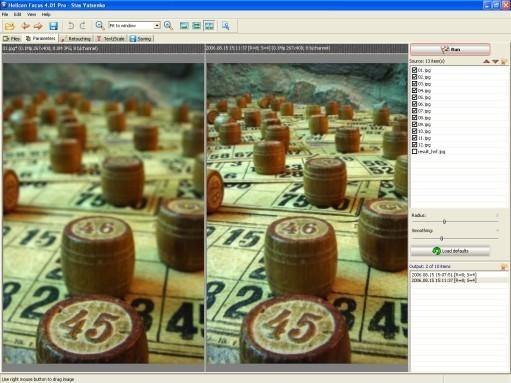
The end result (exported as a JPG) by Lightroom: As soon as it finished saving the image, Photoshop crashed (whee!).ĭuring processing, Photoshop grew to take up over 16Gb of memory, and made the system unusable for anything else, something I've only seen happen on this machine while rendering 4K video.

Overall, I prefer the Helicon Focus image. The Helicon Focus in general is brighter and seems sharper to me. I have lots of these DNG files from stacking and retouching images in Helicon Focus. I like the colors better, the purple flowers on the left are much better, and the yellow center of the flowers on the right are brighter and sharper. Should I be using TIFF instead Or should I really be using the Adobe RAW in DNG out converter when I use Helicon Focus I use an Olympus camera which takes images in proprietary ORF file format, and these ORF files are what I load into Helicon Focus. Overall, both images are good, but I think the Helicon Focus image is a bit better. Interestingly, both of them have very slight halos around the yellow flower at the bottom, evidently a rendering artifact from the blurred version in the later images in the stack. I expect it could be ignored, but I'd probably want to try to clean that up a bit. Overall, I'd give the Photoshop result a 7.5 of 10, and the Helicon Focus a 9. Is Helicon Focus worth having? My decision was yes, and I've bought a license. It'll be my normal processor moving forward. Even if the quality were the same, I'd buy it for the speed and convenience improvement, as well as the ability to save as DNG, but the image results are better as well. It seems like exactly what I'd expect from a dedicated tool vs the more general processor: it's faster, more effecient on resources and gives me noticeably better results. So to me, it's more than worth the price.When capturing image sequences destined for focus stacking, you can use Capture One to select the appropriate sequence of images. If the images are captured using the Focus Stacking tool on the XF Camera, you can select them by Sequence ID (metatag). Select one of the images from the sequence and then choose Select -> Select By Same -> Sequence ID. All the images with the same Sequence ID are now selected. Otherwise, you will have to select the images manually. When the images are selected, they can be sent to Helicon Focus by going to the menu and choosing Image -> Edit Wit h -> Stack in Helicon Focus.Ī dialog will open. It will let you set up the output files that are used in Helicon Focus and some basic adjustments. The Keep processed variants option can be checked if you want to store the processed work-files in order to have a faster workflow for re-processing the images through Helicon focus at a later time (please see below). When things are set up the way you need, click on the Edit Variants. Now the selected images will be processed and imported to Helicon Focus. Afterwards, Helicon Focus will be opened.
In Helicon Focus, you should select your rendering method (please refer to the Helicon Focus Documentation) and click Render. Once the Stacking image is rendered, you should click Save and the dialog will point you into the original capture folder.


 0 kommentar(er)
0 kommentar(er)
